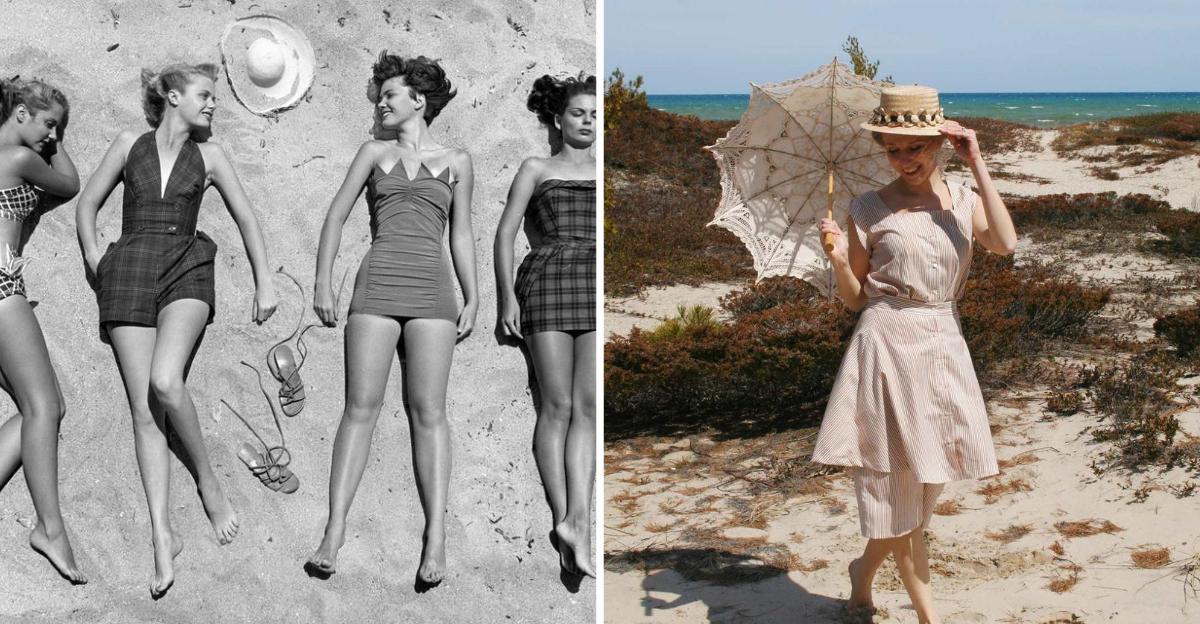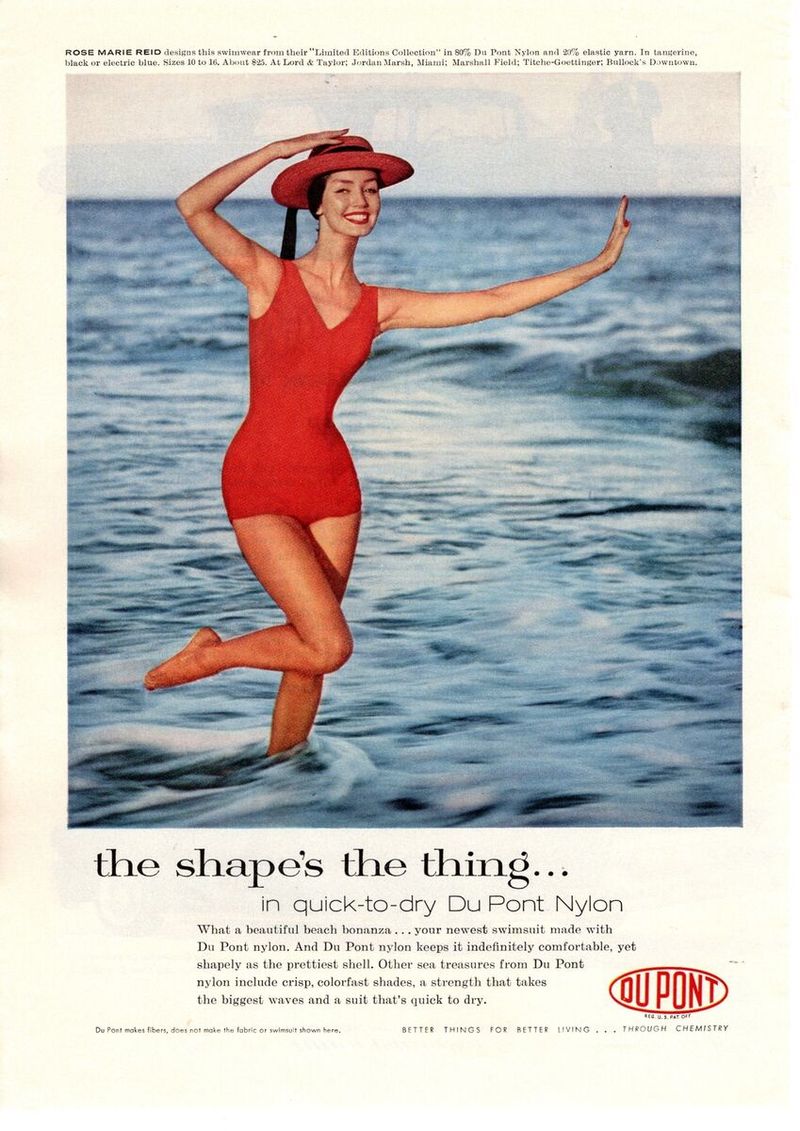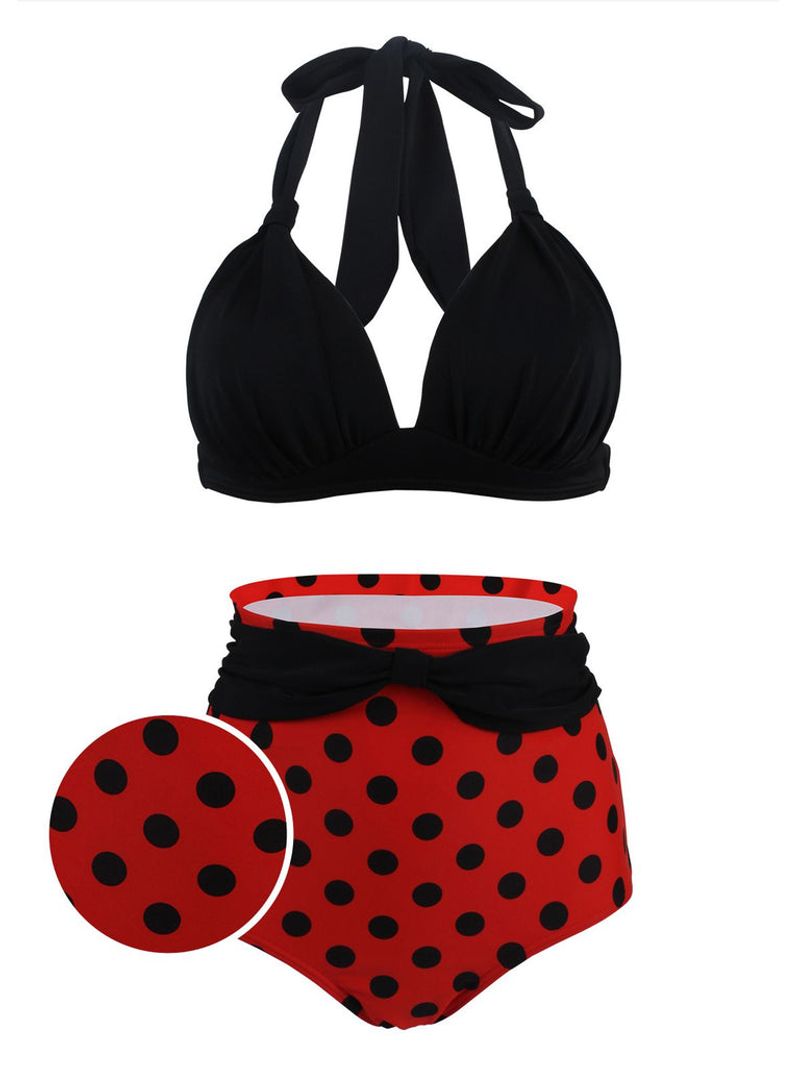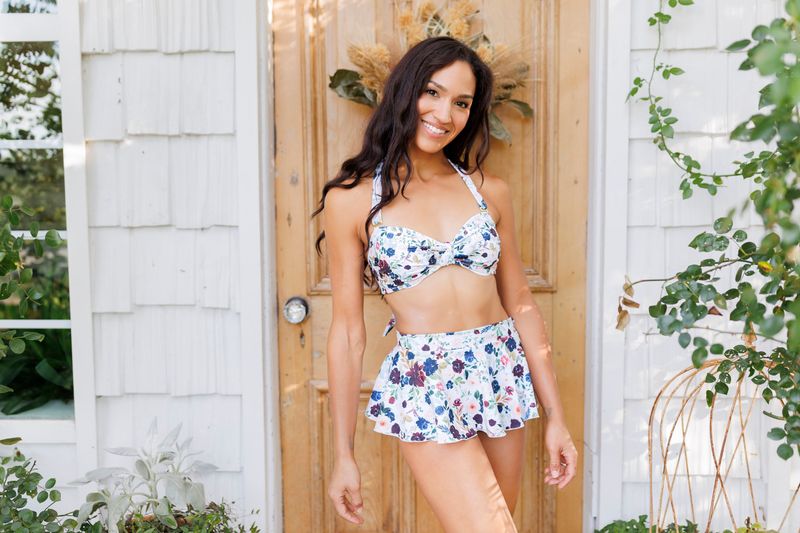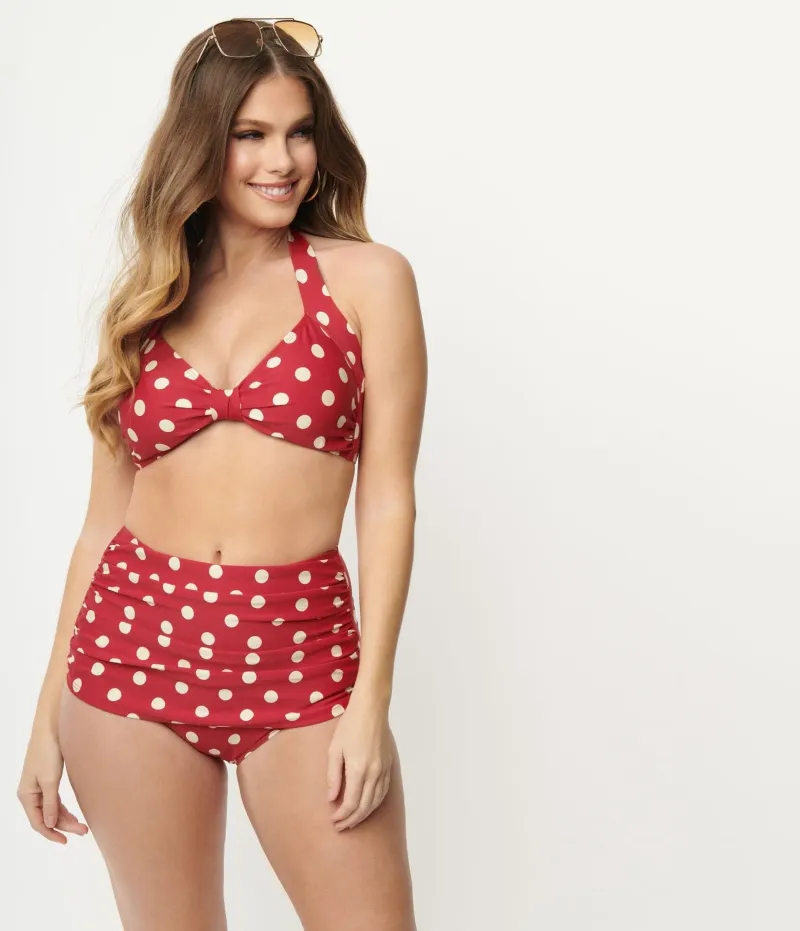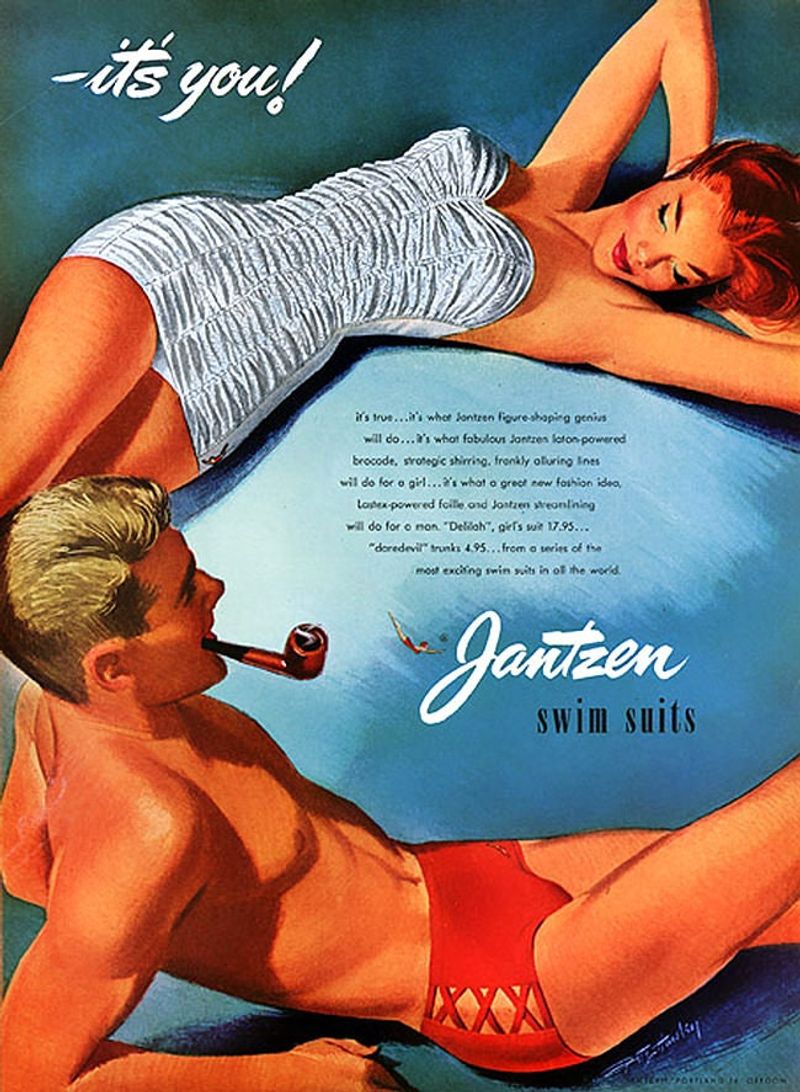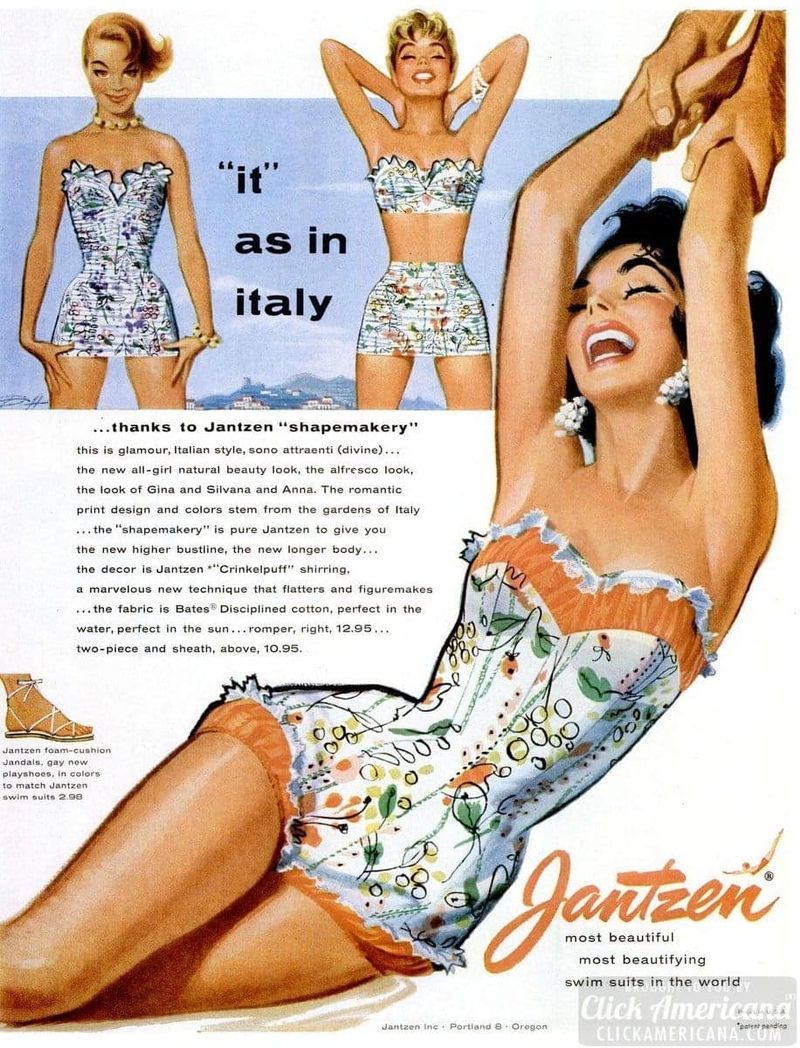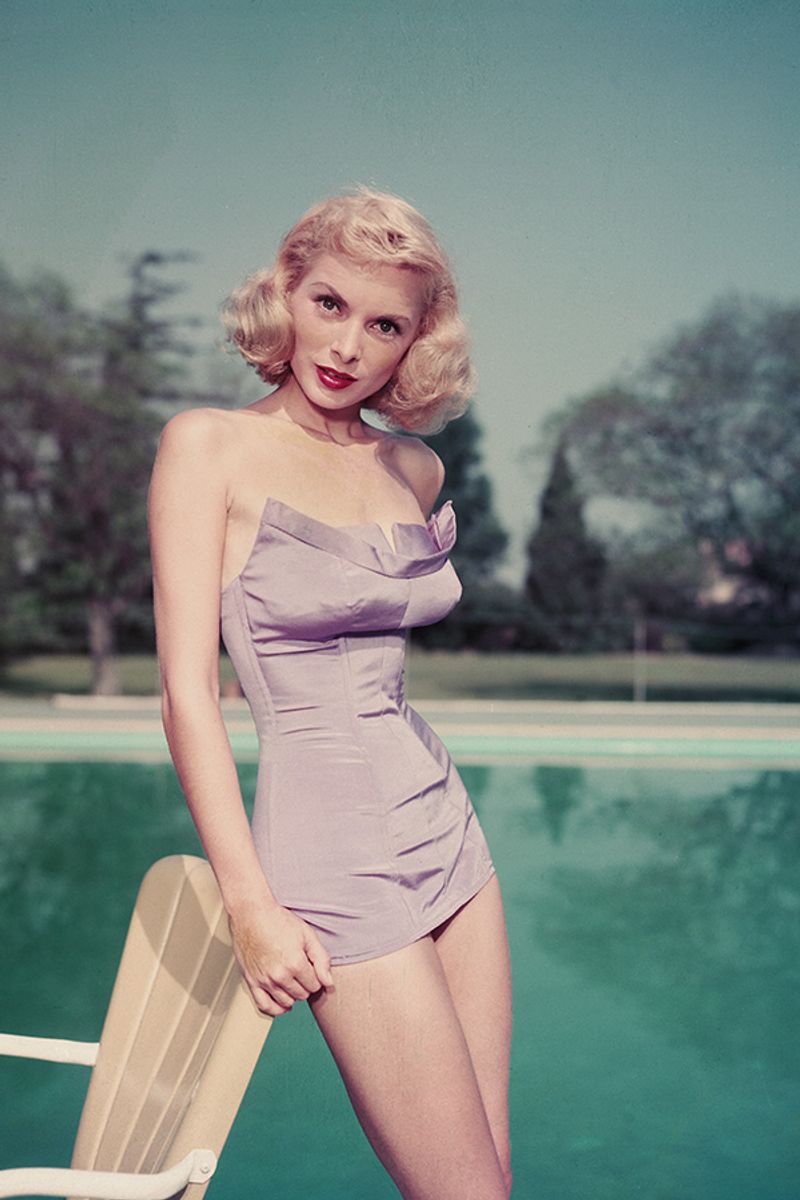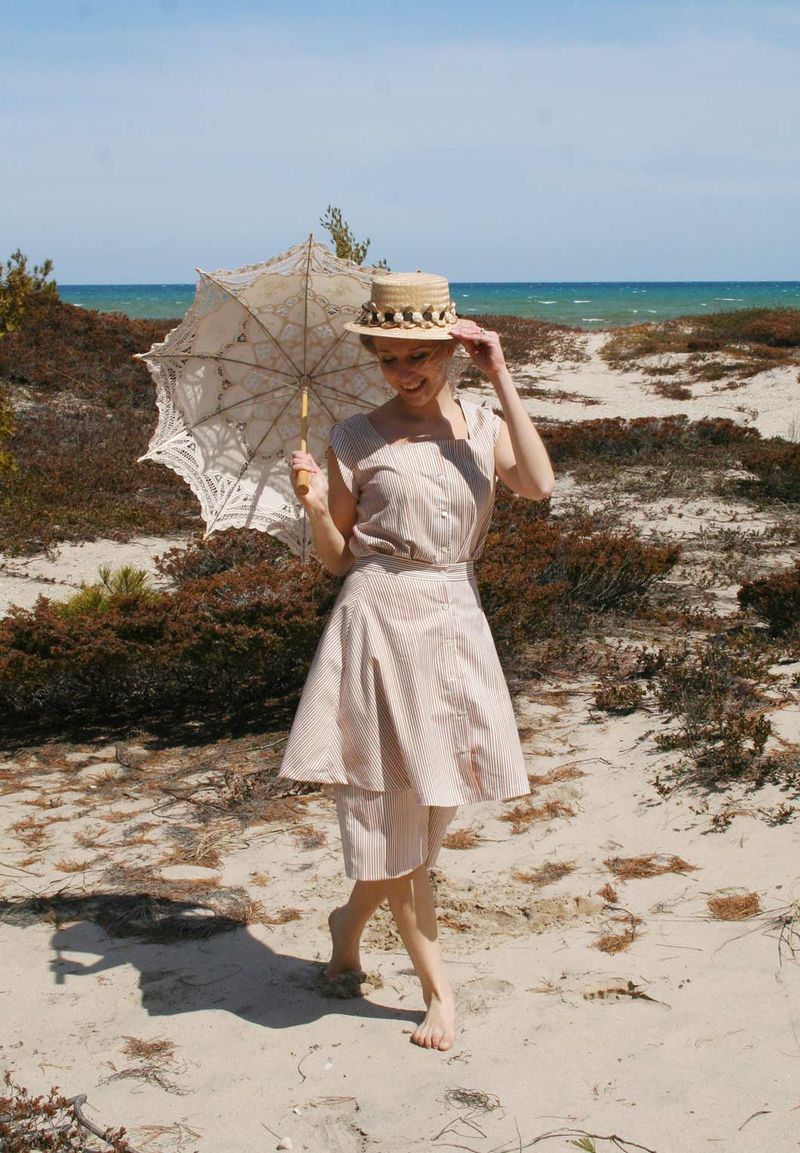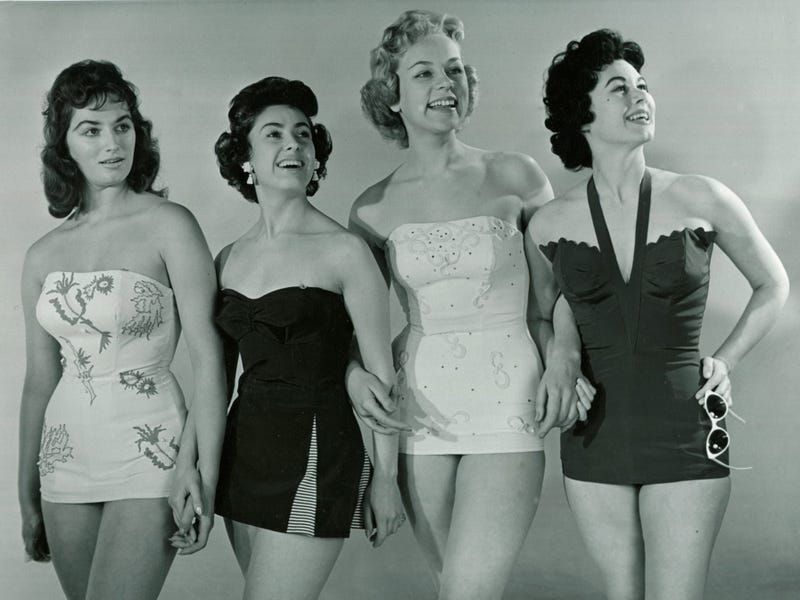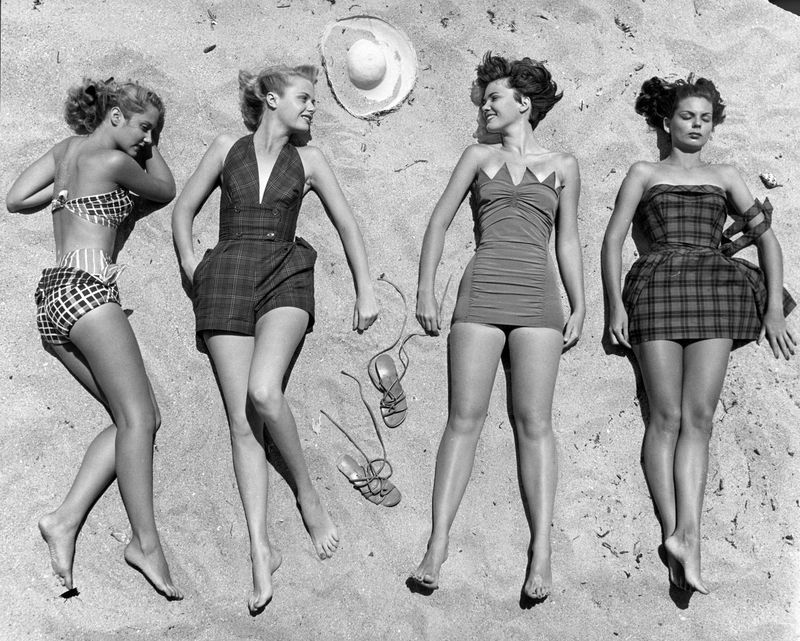The 1950s brought a revolution to beachwear that still influences fashion today. After World War II, swimsuit designs burst with color, innovative cuts, and playful details that celebrated newfound optimism. These iconic styles didn’t just look good—they introduced smart features that made summer fun more comfortable and flattering for everyone hitting the sand.
1. Structured Silhouettes with Built-In Support
Rose Marie Reid changed beachwear forever with her engineering-inspired designs. Her swimsuits featured hidden supports—built-in bras, tummy-control panels, and strategically placed elastic—that worked like magic to create flattering shapes.
Women no longer had to choose between comfort and style at the beach. These clever constructions boosted confidence while maintaining feminine curves, making swimming and sunbathing more enjoyable.
The revolutionary approach to swimwear construction treated each suit almost like architecture, with foundations and supports hidden beneath colorful exteriors. This marriage of function and fashion became the gold standard for decades to come.
2. Vibrant Colors and Bold Prints
The gloomy war years gave way to an explosion of color on beaches everywhere. Swimsuits burst forth in tropical oranges, electric blues, and sunshine yellows that mirrored the optimism of the decade.
Playful patterns conquered the shoreline too. Polka dots, tropical florals, and even novelty prints featuring seaside motifs transformed swimmers into walking works of art. These weren’t just garments—they were expressions of joy and freedom.
Manufacturers embraced new printing technologies that allowed for more complex designs than ever before. The result? Beach fashion became a canvas for self-expression, with each swimsuit making a bold personal statement.
3. Playful Ruffles and Skirted Bottoms
Femininity took center stage with the addition of flirtatious details that danced with every movement. Ruffles cascaded across necklines and hips, adding dimension and whimsy to otherwise simple designs.
Skirted bottoms offered modest coverage while maintaining a sense of fun. These playful additions created movement when walking along the shore or emerging from the water, capturing the carefree spirit of summer vacations.
Peplums—those short overskirts attached at the waistline—became particularly popular for disguising hip areas while emphasizing tiny waists. These architectural elements transformed basic swimwear into statement pieces that celebrated feminine curves.
4. High-Waisted Two-Piece Sets
Before the bikini revolution, the high-waisted two-piece offered the perfect balance of modesty and allure. These sets typically covered the navel while still revealing enough skin to feel fashionably daring.
The genius of this design was its universal flattery. High-waisted bottoms cinched at the smallest part of the waist while providing comfortable coverage over the hips and tummy. Meanwhile, structured tops offered support and shape without sacrificing style.
Stars like Esther Williams popularized this silhouette in splashy Hollywood productions. Their influence turned these practical two-pieces into must-have items for fashion-forward beach-goers who wanted to channel silver screen glamour during their summer holidays.
5. Innovative Fabrics for Better Fit
The fabric revolution of the ’50s transformed how swimsuits performed in water and on land. Lastex—a yarn wrapped in cotton, rayon, or silk—created stretchy materials that hugged curves without losing shape after a swim.
These technical advances meant swimwear could be both flattering and functional. No more saggy suits after a dip! Fabrics dried quickly and retained vibrant colors despite repeated exposure to chlorine and salt water.
Manufacturers like Jantzen and Catalina competed to develop proprietary blends that would offer the perfect combination of stretch, support, and comfort. Their innovations created suits that moved with the body rather than restricting it—a true breakthrough for active beachgoers.
6. Global Influences in Design
The postwar era opened American eyes to international styles, and swimwear designers eagerly incorporated global elements. Jantzen’s famous “International Set” collection featured suits inspired by French Riviera elegance, Italian coastal flair, and exotic South Pacific motifs.
Asian-inspired mandarin collars appeared alongside Spanish-influenced ruffles. These worldly touches transformed ordinary beachwear into conversation pieces that hinted at jet-set sophistication.
For many Americans who couldn’t afford overseas travel, these globally-influenced swimsuits offered a taste of international glamour. Wearing them was like taking a mini vacation—an escape to distant shores without leaving your local beach or pool.
7. Hollywood Glamour on the Beach
Silver screen sirens like Marilyn Monroe and Esther Williams transformed how women approached beachwear. Their glamorous poolside appearances in perfectly styled swimsuits created a new standard for beach beauty that everyday women eagerly emulated.
Sweetheart necklines framed the face beautifully while ruched fabric across the midsection created an illusion of an hourglass figure. Strategic draping disguised perceived figure flaws while highlighting assets—tricks borrowed directly from Hollywood costume designers.
Even accessories got the star treatment. Bathing caps adorned with flowers, dramatic cat-eye sunglasses, and statement jewelry completed these camera-ready looks. The beach became everyone’s personal film set, with each swimmer starring in their own summer blockbuster.
8. Coordinated Accessories and Cover-Ups
The 1950s beach ensemble went far beyond just the swimsuit itself. Coordinated cover-ups, often in matching fabrics or complementary patterns, transformed swimwear into complete outfits suitable for beachside lunches or promenade strolls.
Wide-brimmed sun hats, often decorated with ribbons or flowers, protected delicate skin while adding dramatic flair. Beach bags were equally stylish—many designed specifically to match particular swimsuit collections.
Terry cloth beach jackets with oversized collars became must-have items for fashionable swimmers. These thoughtfully designed accessories weren’t afterthoughts—they were integral parts of the beach wardrobe, creating head-to-toe looks that maintained glamour from water’s edge to boardwalk.
9. Emphasis on Hourglass Figures
The iconic 1950s hourglass silhouette dominated swimwear just as it did everyday fashion. Clever construction techniques emphasized tiny waists between curvy hips and enhanced busts—even for women not naturally blessed with these proportions.
Strategic boning, padding, and ruching created the desired shape, while colors and patterns were placed to draw the eye exactly where designers intended. Dark side panels created visual slimming effects, while bright patterns highlighted the bust and hip areas.
This celebration of curves represented a dramatic shift from earlier decades’ straight-line silhouettes. The look was unabashedly feminine and proudly sensual, embracing womanly shapes rather than minimizing them—a perfect reflection of the era’s return to traditional gender roles after wartime disruption.
10. Introduction of the Bandeau Top
The strapless bandeau top revolutionized beachwear by freeing shoulders from tan lines while creating a sleek, modern silhouette. Originally inspired by French Riviera styles, this daring design quickly captured American imaginations.
Built-in boning and rubber strips along the upper edge kept these seemingly gravity-defying tops securely in place. Many featured detachable straps that could be added for active swimming and removed for optimal sunbathing.
Fashion-forward women embraced the bandeau for its sophisticated minimalism and the way it showcased collarbones and shoulders. This simple horizontal line across the chest became an iconic swimwear element that continues to cycle back into fashion decade after decade.
